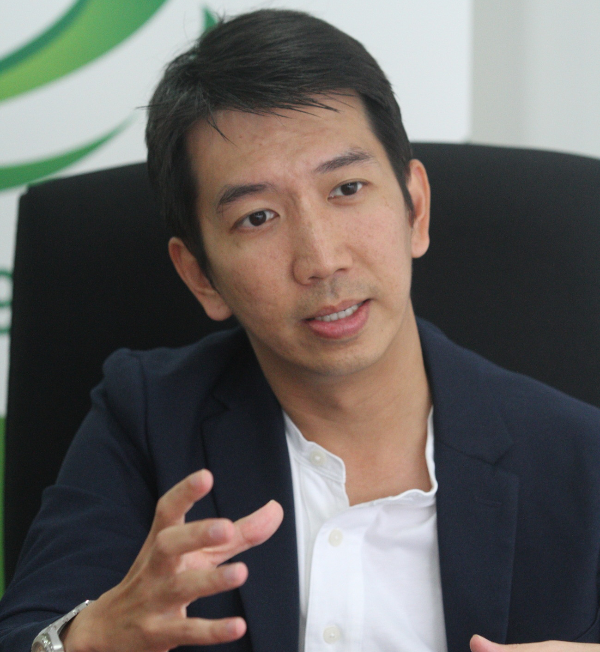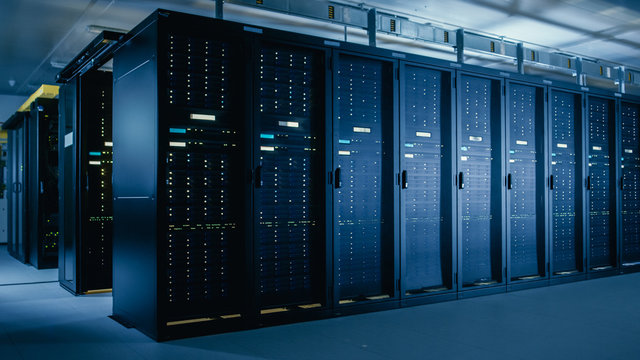[Exclusive] Is the rapid promotion of AI in data centers a golden opportunity? Or a bubble?
Exclusive report: Chen Meiling, Li Wenjiang
Data Center Investment Boom in Malaysia
The data center investment boom has swept the world, and Malaysia is no exception. As more and more companies rush into the market, one can’t help but wonder, will this wave of investment boom eventually collapse like the previous technology bubble?
Market experts have different opinions on this. Nanyang Siang Pau interviewed data center operators and fund managers to explore the current market status of data centers, analyze bubble risks, and look forward to its future development prospects.
The rapid growth of data center investment is due to many factors, including government policy promotion, technological progress, and market demand growth.
At its core, the central processing unit (CPU) and the graphics processing unit (GPU) support the entire computing engine. As computing needs continue to evolve, the boundaries between the two have become blurred. What is the difference between them and the neural processing unit (NPU) used to accelerate AI?
GPU Vs. CPU
As the demand for advanced workloads such as artificial intelligence (AI), analysis, and 3D rendering continues to increase, the role of GPUs in data centers is becoming increasingly important. Through powerful parallel processing capabilities, GPUs can effectively complement the functions of CPUs and accelerate the output of results and the innovation process. These new use cases require different types of computing power to drive high-performance computing (HPC) and visual cloud computing. The introduction of GPUs will help meet the growing demand for high-performance computing and massive data processing.
The combination of GPU and CPU improves the overall computing power. Although both are chip-based microprocessors, they are designed for different tasks.
CPUs are suitable for handling a large number of workloads and applications, especially when latency or per-core performance is critical, and they can quickly complete a single task with a small number of cores, making them ideal for handling databases and serial computing tasks.
In contrast, GPUs were originally designed to accelerate specific 3D rendering tasks, but over time they have become more programmable and flexible.
Bringing GPUs into a data center is a vexing proposition for builders or owners, and there are several challenges to overcome. Among them, these high-performance tools consume more energy and space, generate more heat when running, and can strain data center infrastructure, increase power costs, or impact reliability.
It goes without saying that addressing power and cooling issues is critical to successfully operating GPUs. When deploying GPUs, it is important to evaluate rack power distribution units, uninterruptible power supplies, and cooling capacity to ensure that power and cooling are adequate to avoid performance and availability constraints.
Although the combination of GPU and CPU can meet the high computing requirements of emerging use cases such as AI, analysis and 3D rendering, GPU takes up more space, consumes more electricity and emits more heat than using CPU alone. By properly utilizing the advantages of GPU and CPU, data centers can meet modern computing needs, promote technological innovation, operate more efficiently and achieve better results.

Malaysia Can Become a Regional Hub
The success of investing in data center concept stocks depends on whether you have a long-term and in-depth understanding of the future business development of related companies, including the information gap therein.
In an exclusive interview with Nanyang Siang Pau, Wang Rongyao, executive director of DE-CIX Malaysia, said that as a data center operator, although he is well aware of the pros and cons, data centers are full of business opportunities and can drive hidden economic effects.
“It is the cornerstone of the modern internet and digital economy, providing the necessary power and environmental control for servers, ensuring the stability and security of data storage and processing.”
Without data centers, Internet services that modern life relies on, such as email, social media, online trading and cloud storage, would not function properly.
“Electricity and water are the basic elements of a data center. There are also complete fire protection systems, flood prevention measures and security systems to ensure the safety of equipment and data. Environmental humidity and air quality management are also very important.”
DE-CIX is headquartered in Germany and signed a joint venture agreement in 2020 to start its data center journey in Malaysia, which is located in Johor.
Wang Rongyao said that Malaysia’s data center industry has a very bright future because of its strategic geographical location and being located in the heart of Southeast Asia, it can become a regional hub.
Secondly, the government attaches great importance to the development of the digital economy and has introduced a number of supporting policies to attract a large amount of domestic and foreign investment. Malaysia has abundant natural resources and relatively low electricity costs, which provide favorable conditions for the development of data centers.
“DE-CIX is committed to promoting Malaysia as an important node for global data exchange and helping Malaysia occupy a more important position in the global digital economy through advanced data center facilities and services.”
Will this craze fade away, or will it be a bubble? He pointed out that with the rapid development of the digital economy and the continuous growth of Internet traffic, the demand for data centers has increased significantly, but we must be wary of the risks of over-investment and market saturation.
Talents are Urgently Needed Upstream and Downstream
He said data centers actually have a positive impact on the job market, especially in upstream and downstream industries.
On the upstream side, data centers require a lot of infrastructure construction, engineering design, and equipment manufacturing, which creates many job opportunities for construction engineers, mechanical engineers, and technical workers.
On the downstream side, the operation and maintenance of data centers require IT professionals, network engineers, system administrators, and security experts.
This not only promotes the employment of technical talents, but also promotes related training and education industries. In general, the development of data centers has driven the prosperity of the entire ecological chain and created a wide range of employment opportunities.
Future data center technology will move towards a more efficient, green and intelligent direction. At the same time, there will be more and more innovative technologies, such as liquid cooling technology, modular data centers and artificial intelligence, which are gradually changing the way data centers operate.

Investment Level: Gold Everywhere
Regarding the current technology sector, the data center investment boom is sweeping the world, and Tradeview Capital founder and CEO Huang Zhihan has unique insights on this.
“The data center boom is driven by the rapid development of AI technology. AI requires powerful computing power and a large number of servers, which drives the demand for data centers. In particular, GPUs play a vital role in supporting the development of AI technology.”
In the past, AI technology has not made any breakthrough progress, but since the advent of OpenAI, AI has been increasingly used in daily life, attracting high attention and investment from technology giants such as Google, Facebook, Amazon, and Apple.
Therefore, data centers, as core infrastructure for storing and processing massive amounts of data, have become indispensable.
Huang Zhihan said that government policies have always been very supportive of business development, especially in attracting AI-related companies. Policies on setting up factories and buying land are relatively relaxed, especially for AI or data centers, where special approvals can be obtained without the previous Bumiputera requirements or employment pass (EP) restrictions.
The entire industrial chain in Malaysia, from implementation to approval, is a very fast process. At the same time, the land in Malaysia is relatively cheap, which has attracted many large technology companies to come and develop the industrial chain.

Investment Bubble Risk
Despite the booming data center industry, Huang Zhihan also reminded investors to be wary of potential bubble risks.
He said many investors and businessmen were attracted by the craze in this emerging field, but data centers are a high-tech industry and not all investors have sufficient expertise and understanding.
After some companies announced a memorandum of understanding on cooperation, their stock prices rose rapidly, which is a typical feature of investment bubbles. “The data center industry has a very high technological content, and it is not easy for ordinary businessmen to enter the market. There are indeed many people who hope to profit from it, which is why there is a certain investment bubble in data centers. Although the potential profit space is large, it does not mean that there will be no risk of not being able to rent out the data center. No one dares to guarantee that operating a data center will definitely make a lot of money.”
Huang Zhihan believes that the real beneficiaries of this craze are first and foremost developers and land owners, as they can make profits through selling land and contracting projects.
Water and Electricity Supply Must Not Be Interrupted
However, whether data center operators can attract enough customers remains a key challenge.
The construction cycle of a successful data center usually takes 18 to 36 months, and during the process, there will be bottlenecks such as development permits and water and electricity connections. Ensuring a stable water and electricity supply is one of the biggest challenges in the construction process. He said that to stably and continuously operate a data center, a stable cooling system and temperature management are required. Once there is a power outage or water outage, the operational consequences will be fatal.
“Therefore, choosing a suitable construction site and ensuring adequate power and water sources are huge challenges.”
Meeting these challenges requires detailed planning and anticipation, including building strong partnerships, ensuring a stable supply chain, adopting advanced project management tools, regularly reviewing and adjusting plans, and working with reliable contractors and suppliers.
Huang Zhihan emphasized that despite the risk of investment bubble, Malaysia’s data center market is still full of potential, driven by policy support and geographical advantages.
Looking ahead, we believe that data centers will further support the development of AI technology by improving computing power, optimizing energy consumption, and improving security and data management capabilities. In addition, data centers will continue to expand their infrastructure and adopt new technologies such as quantum computing and edge computing to meet the growing demand for AI applications.

Wong Kam Wing
The Boom Boosts Regional Economy
Dr. Huang Jinrong, professor of economics at Universiti Tunku Abdul Rahman, pointed out that the investment boom in data centers is a global phenomenon, and the main driving factors include technological advancement and increased demand, platform economy and the rise of regional economies.
“In Asia Pacific and other emerging markets, demand for data centers is growing rapidly, and as businesses and governments accelerate their digital transformation, there is an increasing need for data storage and processing capabilities.”
The Malaysian government is actively attracting investors through tax breaks, fast approval procedures and support policies for green energy.
Of course, the development of data centers has a significant impact on business operations and the economy, improving operational efficiency and promoting innovation.
From a larger perspective, the specific contribution of data centers to the economy includes the construction and operation driving the construction, power supply and equipment manufacturing industries, thereby generating significant economic benefits.
In terms of strategic significance, as the infrastructure for digital transformation, data centers promote the digitalization process of various industries, attract more high-tech investment and foreign capital into Malaysia, and shape the industrial chain ecosystem.
Huang Jinrong said that the growth in data demand will lead to an increase in rental and service costs, and the return on investment will inevitably rise.
No Obvious Bubbles
Since data centers require a large amount of electricity, they may put pressure on the national power system. Operators need to continuously upgrade equipment to meet the latest technological requirements. They also need continuous capital investment to lay a high level of network security to prevent cyber attacks and data leakage risks.
When asked whether there are signs of a bubble in the data center, Huang Jinrong said that there is currently no obvious investment bubble in the relevant field because of the development of AI, big data and cloud computing technologies, and the increasing demand, which provides a stable market foundation.
In addition, construction and operation require high investment and high technical standards, which can limit blind investment.
“Nevertheless, the market still needs to be wary of future oversupply or investment risks brought about by changes in market demand.”
High Technical Requirements
Regarding the job market, Huang Jinrong said that due to the high reliance on automation technology for operations and management, less manpower is required. However, data centers have relatively high technical requirements, so they need talents with professional skills such as engineering, IT and data management.
“The most in-demand professions and skills are electrical engineering, refrigeration engineering, data center management, network security, and big data analysis.”
However, he said that by cooperating with universities and training institutions to provide targeted talent training programs, he believed that the talent shortage problem could be gradually alleviated. – Nanyang Siang Pau




